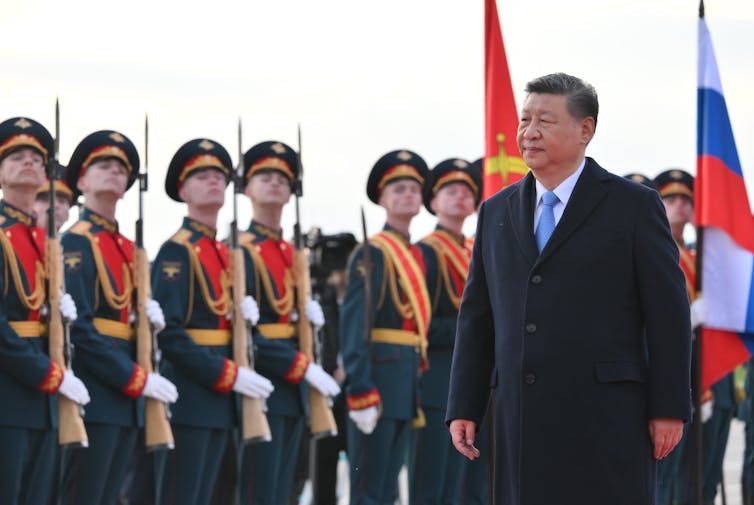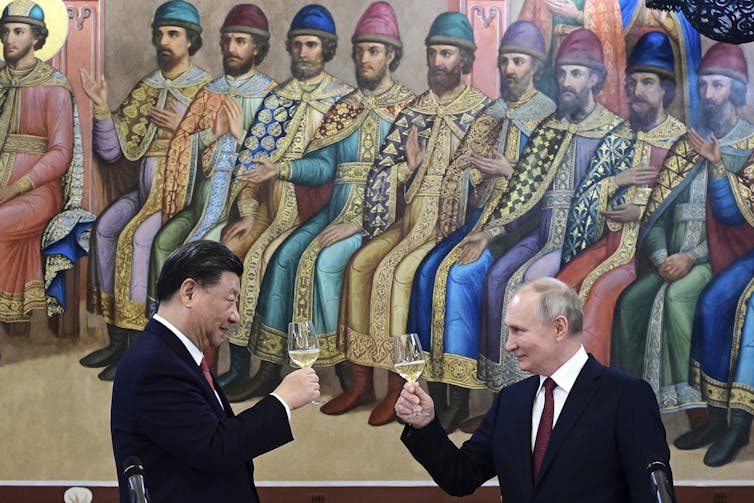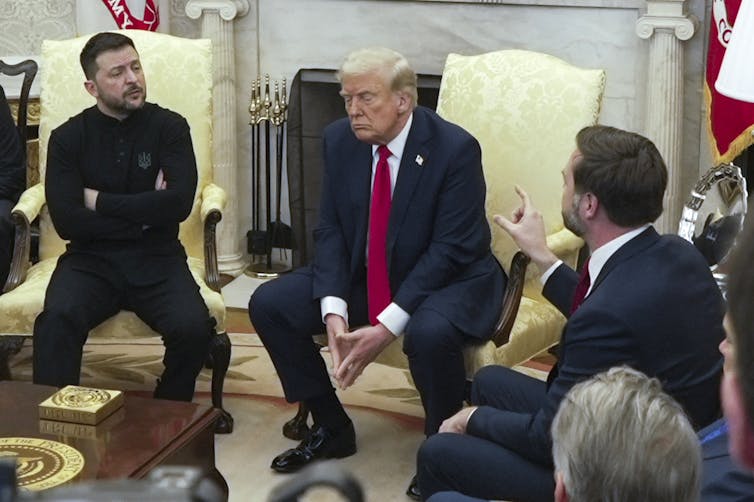When United States President William McKinley advocated high‑tariff protectionism in 1896, he argued squeezing foreign competitors behind a 50% wall of duties would make America richer and safer.
That logic framed US trade debates for a generation, but it was always an economic device – not a geopolitical lever.
In 2025, Donald Trump, now the 47th US president, slapped tariffs on most imported goods to the United States, specifically targeting Chinese imports.
Yet, despite the fact he idolises McKinley, Trump’s emerging grand strategy looks less like his customs schedule and more like Richard Nixon’s “madman” diplomacy of the early 1970s.
Trump is signalling that unpredictability, not price schedules, will coerce adversaries and reorder alliances.
An image of irrational resolve
McKinley’s 1890s tariffs nearly doubled average duties, shielding domestic manufacturers but doing little to shift the global balance of power.
The lesson from these tariffs was straightforward: protectionism may enrich some sectors, but it rarely bends rivals’ strategic choices.
Trump’s first term flirted with McKinley-inspired trade wars, industrial policy and “America First” rhetoric. His second term “strategic reset” moves onto darker, Nixonian ground.
Nixon and his secretary of state, Henry Kissinger, cultivated an image of irrational resolve. They hinted they might do “anything”, even use nuclear weapons, to force concessions in Vietnam and alarm the Soviet politburo.
Nixon’s White House chief of staff, H.R. Haldeman, recalled the president demanding Moscow and Hanoi see him as a man “with his hand on the nuclear button”.
The gambit dovetailed with a bold diplomatic inversion. By opening to Mao Zedong’s China, Nixon sought to isolate the Soviet Union.

AP Photo, File
Trump’s ‘reverse Nixon’ efforts
Half a century later, Trump appears to be running the tape backward.
Rather than prying China from Russia, he is testing whether Moscow can be prised from Beijing.

RIA Novosti/EPA
In early April, he imposed a blanket 54% tariff on Chinese goods – yet exempted Russia, Cuba and North Korea from the harshest duties.
The White House has simultaneously floated selective sanctions relief for Moscow if Vladimir Putin shows “flexibility” on Ukraine.
Trump’s boosters call the manoeuvre a “reverse Nixon”: befriend the weaker adversary to hem in the stronger.
Al-Jazeera recently reported senior US officials and analysts believe deepening ties with Russia could splinter the Sino‑Russian axis that has unnerved US strategists for years.
But Foreign Affairs warns that even if Washington dangled lavish incentives, Putin would “play Washington and Beijing off each other” rather than choose sides.
Australia’s Strategic Policy Institute is blunter: the idea of splitting the pair is “a delusion”.
Nor is the madman pose guaranteed to intimidate. Scholars note Nixon’s bluff worked only when coupled with painstaking back‑channel diplomacy; the façade of irrationality still required a coherent end‑game.
Trump’s record of erratic statements on NATO, sudden tariff escalations and social media outbursts risks convincing adversaries that chaos is the message, not the method.

Pavel Byrkin, Sputnik, Kremlin Pool Photo via AP, File
Success would require discipline
Yet, the strategic prize is real.
A durable Sino‑Russian alignment forces Washington to split resources across two theatres, complicates sanctions enforcement, and gives Beijing access to Russian hydrocarbons and military technologies.
Even a partial wedge – Moscow adopting neutrality in a potential Indo‑Pacific crisis, for instance – would lighten America’s load and disadvantage China.
Can Trump craft a credible offer? Tariff exemptions and the hint of sanctions relief are carrots; resumed arms‑control talks and guarantees of Russian equities in a post‑war Ukraine settlement could sweeten the pot.
The sticks are clear: escalating tariffs and technology bans on China, plus renewed US gas exports aimed at undercutting Sino‑Russian energy deals.
The fact CIA Director John Ratcliffe called China the “top national security threat” in his confirmation hearings earlier this year – relegating Russia to a lesser threat – underscores the hierarchy.
Still, success would require disciplined messaging and allied buy‑in, traits not often associated with madman theatrics.
If European and Indo‑Pacific partners suspect Washington will mortgage Ukraine’s security or trade their markets for a fleeting Moscow détente, unity will fray.

AP Photo/ Mystyslav Chernov, File
For Australia, the stakes are immense
For Canberra, the calculus is stark.
Australia’s primary challenge is a more assertive China, not a distant Russia.
If Trump could drive even a hairline crack between Moscow and Beijing, the Indo‑Pacific balance would tilt in favour of the US and its allies.
A Russia preoccupied with Europe or simply unwilling to share sensitive missile and space technologies would deprive China of critical enablers.
Conversely, a bungled “reverse Nixon” strategy could embolden both autocracies.
Should Putin benefit from US tariff exemptions and sanctions relief while deepening defence ties with Beijing — as recent drone and satellite deals suggest – Australia would face a sharper, more integrated adversarial bloc.
The lesson, for Australia, is to hedge: continue deepening AUKUS technology sharing, accelerate long‑range strike acquisition, and tighten diplomatic coordination with Japan, India and ASEAN states.
For Australia, perched on Asia’s faultline, the stakes are immense. A successful wedge would ease pressure on the “first‑island chain” – the chain of strategic islands that stretches from Japan through Taiwan, the Philippines and Indonesia – and give Canberra precious strategic depth.
A failed gambit risks confronting Australian forces with a tandem of nuclear‑armed revisionists (Russia and China) emboldened by US miscalculation.




